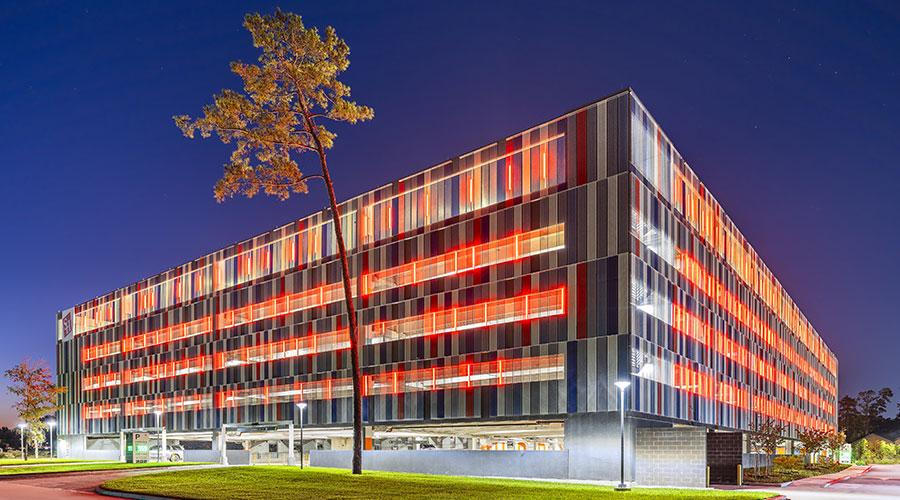Lighting Technology Advances Lead To Greater Energy Efficiency Savings
Reducing energy use is a long-standing goal for most facility managers. Conscientious efforts to trim energy consumption reduce both costs and the size of the organization's carbon footprint. But pressure for further gains in energy efficiency continues to grow. Energy requirements in building codes, which over time have driven substantial changes in the way buildings are built and renovated, continue to get tougher. And over the past several years, the industry has begun to adopt an ambitious new goal: to achieve the U.S. government's target to build "net zero energy buildings" by 2030. Lighting technology advances are helping meet the goal of greater energy efficiency savings.
Because lighting accounts for between 20 to 30 percent of a building's electricity load, the bar keeps getting raised for lighting energy performance. For example, ASHRAE 90.1-2013 has changes to improve daylighting and daylighting controls and space-by-space power densities.
Title 24 for Energy Standards, updated by the California Energy Commission introduced several requirements for control features within lighting systems. The new standard takes effect in July. Another California standard, Title 20, sets energy efficiency requirements for lamps and luminaires and publishes a database of products that comply with the requirements.
These changes in lighting requirements are part of a broader effort to use codes, standards, and regulations to improve building energy efficiency. "For instance, both ASHRAE 90.1-2010 and California Title 24-2013 have lowered compliance thresholds significantly," says Rita Renner, director at WattStopper. "This means that potentially modest retrofits or lighting upgrades may trigger code compliance for core requirements, such as automatic lighting shutoff."
Additionally, the newly released LEED v4 adopts ASHRAE 90.1-2010, while ANSI/ASHRAE/USGBC/IES 189.1, Standard for the Design of High-Performance Green Buildings, is being updated to reference the 2013 version of ASHRAE 90.1.
Some jurisdictions also are introducing their own building energy rating and disclosure regulations. These regulations mandate the reporting of a facility's energy performance — either on an annual basis or when a triggering event, such as a sale or lease or financing of a building — occurs. While disclosure laws don't specifically mandate building energy performance improvements, they do aim to increase awareness and create a demand for improved efficiency, which in turn can drive demand for more advanced technologies.
"Energy codes and standards are moving in step with the evolution of conservation technology," says Kam McCormick, national technical sales manager for Leviton Lighting & Energy Solutions. "Prior to adoption, most requirements already have several paths to a compliance solution. This relatively rapid development process (three-year adoption cycles) is serving to keep the electrical and illumination industries on their toes."
Better Lighting Choices
The reason that efficiency standards keep getting tougher is that the technology has improved significantly over the past several years. Today, it is cost-effective to reduce lighting energy use even in many spaces that upgraded lighting in the past. In spaces with old T12 technology, the paybacks are even faster.
"This low-hanging fruit tends to offer more clear-cut energy savings and faster project payback compared to other capital improvements, such as high-efficiency HVAC systems, low-flow plumbing fixtures or new windows or insulation," says Jenifer Walsh, vertical marketing manager, commercial property for GE Lighting.
From refined controls, to better daylight systems, to new lamping options, advances in today's lighting technology help systems respond more precisely to activity within a particular space or within an entire facility, boosting performance and efficiency.
According to Michael Jouaneh, manager of sustainability and energy standards at Lutron Electronics Co., the use of controls allows facility managers to use such strategies as high-end trim and tuning that sets target maximum light levels based on occupant requirements; occupancy and vacancy sensing; multi-level lighting and dimming; and daylight harvesting.
"Looking more closely on the controls side, we've seen development of intelligent controls that provide more sophisticated sequences of operations that can result in more energy-efficient lighting sources," Renner says.
Wireless lighting controls are also an option. They are compatible with existing equipment and require little, if any, additional wiring, according to Jouaneh. "Another advantage is that they preserve the existing building infrastructure," he says. "There is no need to tear up walls and ceilings to install a wireless system."
Related Topics:














